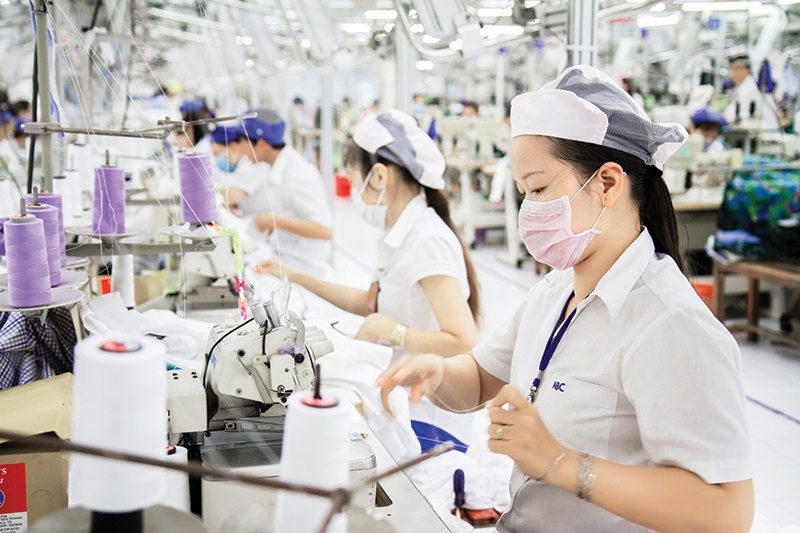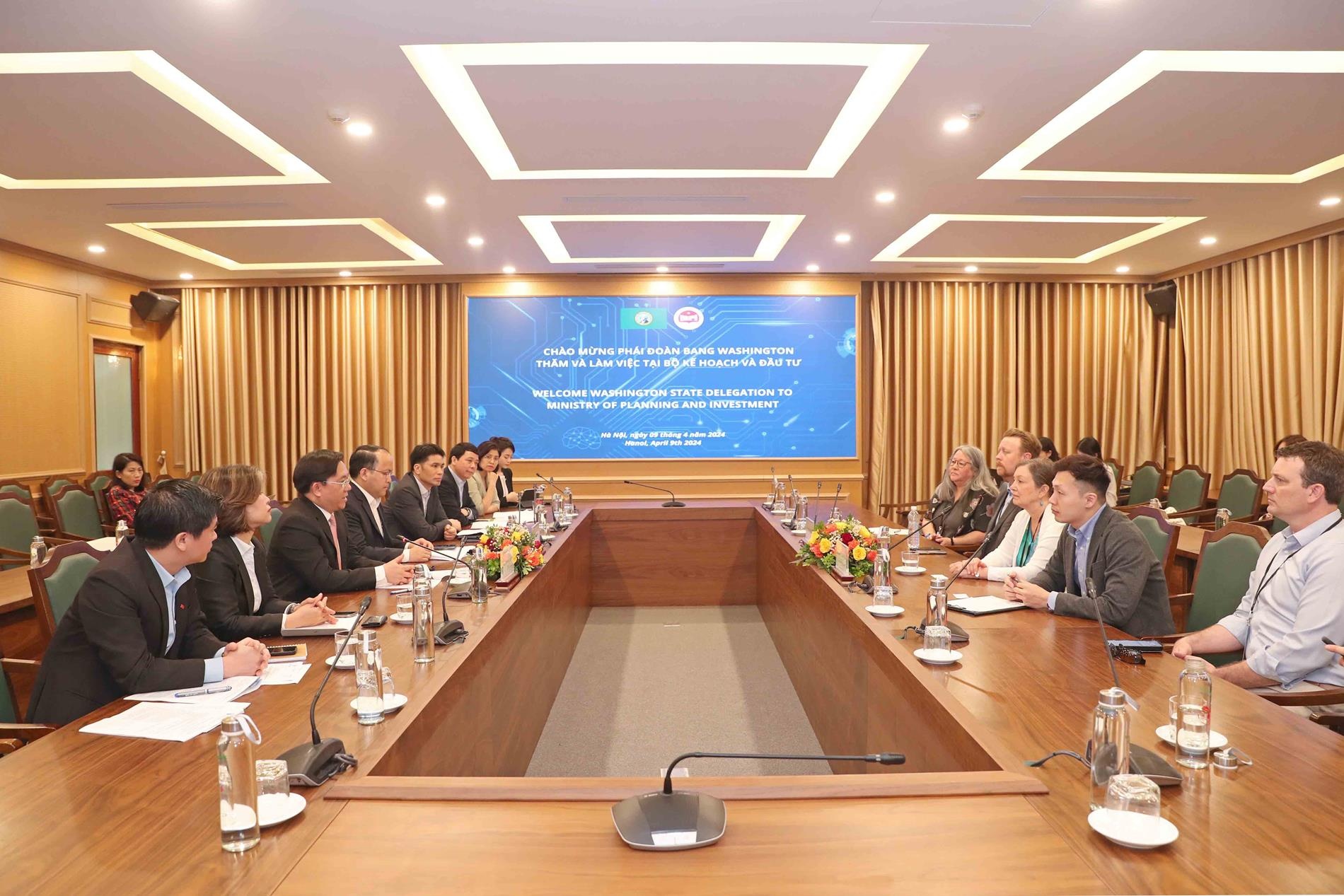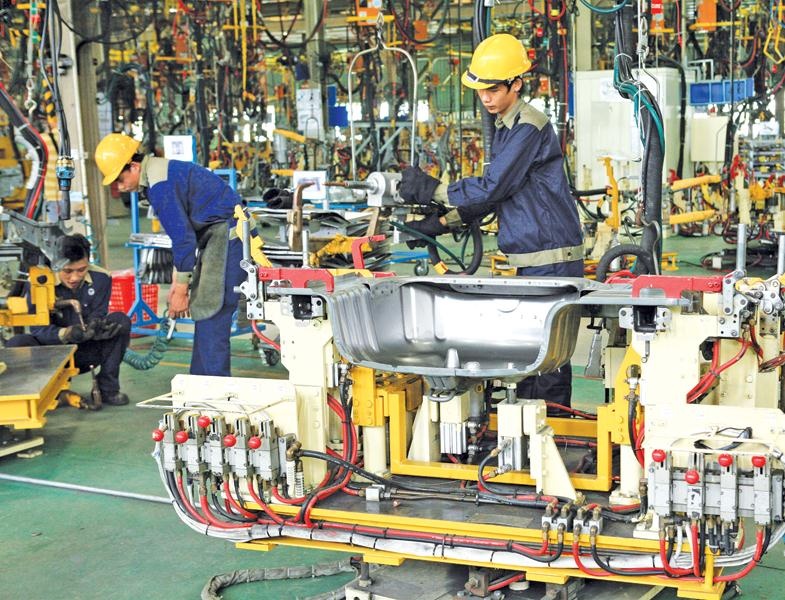A vibrant supply chain is next target for economy
 |
Prominent economist Nguyen Mai shares his view on the current state of Vietnam’s supporting industries – an essential factor to push growth in the manufacturing sector and enhance the competitiveness of production firms – and how to boost their development.
The “supporting industry” concept first appeared after the Second World War, when each component of a product was made in different locations before being assembled at a single factory to create end-products.
Supporting industries are not specific industries, but are relevant to end-products of a particular industry, supplying components and parts to industrial products. Based on the end-products, each particular industry has evolved specific supporting industry systems.
Since the early 21st century, the Vietnamese government has been focusing on local supporting industry development. Incentive policies have been introduced in the last five years to stimulate the connection between foreign-invested enterprises and local businesses, bringing initially encouraging results in motorised vehicle and consumer electronics production.
The country, however, has failed to foster major supporting industry products on a national scale. The country’s production of items such as cars, phones, electronics appliances, leather and footwear products, and textiles and garments is stuck at the processing stage, with low added value.
 |
| Local firms currently have bigger opportunities to improve their competitiveness and join the global supply chain |
This is due to a number of factors. First, there is a lack of national-level supporting industry priority investment strategies, which are intended to turn out huge production volumes. In the 1990s, Malaysia focused on electrical and electronics development to feed domestic production and create frontline export items for the world market.
Consequently, these industries came to occupy 57 per cent of Malaysia’s total export value in 2000.
In Thailand’s case, as a result of its policy to stimulate foreign direct investment into the car-making industry, the country has lured 17 global auto firms into establishing local operations.
Last year, the country made 2.45 million cars, about half of which were bound for export. 635 first-tier suppliers (65 per cent of the total) are Thai businesses or foreign joint ventures in which Thai investors retain controlling stake.
About 1,700 second-tier suppliers were Thai businesses also.
Second, current supporting industry development policies fail to cultivate connections between foreign invested enterprises (FIEs) and domestic businesses, particularly small- and medium-sized enterprises (SMEs). Although a number of leading multinational companies such as Toyota, Honda, Intel, Samsung, and Canon have established major manufacturing bases in-country, few local firms have succeeded in acting as suppliers for these global players.
Japan External Trade Organization (JETRO) survey figures show that the locally-sourced component and material volume serving industrial production in China and Thailand currently represents 50-60 per cent of total production value, while in Vietnam this rate is merely 27.8 per cent. Therefore, the added value of made-in-Vietnam goods just stands at about 15-30 per cent, including major export items like textile clothing and footwear products.
Third, the absence of vertical alliance models (supply chain from input suppliers to end-product makers to product distributors) as well as horizontal models (between producers of the same item) isolates the development of specific supporting industries. The associated work assignments and co-operation that would come with these models would sharpen competitiveness in both the domestic and international market.
Supply chain linkage model
A supply chain is a system of organisations, people, activities, information, and resources involved in moving a product or service from suppliers to consumers.
A green supply chain focuses on greening many aspects of the supply chain, such as manufacturing, packaging (using recycled materials), transportation (minimising greenhouse gas emissions during the process), point-of-sale (providing consumers which sufficient product information), customer use, and end-of-life procedures (product recycling).
Some studies show that only about 21 per cent of Vietnamese SMEs are participating in the global supply chain, whereas the figure surpasses 30 per cent in Thailand and hits 46 per cent in Malaysia.
SMEs have gained little from FIEs in terms of technology transfer, knowledge, and increased productivity.
Local businesses have mainly established trading relations, while neglecting to support each other in the supply chain.
This situation saw clear evidence in the textile, garment, and footwear industries.
Last year the textile and garment sector’s export value touched $27.2 billion. However, the sector spent $16.6 billion importing materials and accessories. Only about 40 per cent of materials were locally produced (mainly knitwear items), whereas shuttle-woven items must be imported to the tune of 70-80 per cent, according to textile trading firm Corporation 28’s general director Nguyen Van Hung.
Vietnam Textile and Apparel Association general secretary Nguyen Van Cam said that each year Vietnam exports 700,000-800,000 tonnes of yarn out of the 1.2 million tonnes produced locally. This leads to a situation where locally-produced fabric is mainly bound for export, while export-oriented production firms have to import yarn to feed production.
As for the footwear industry, last year the sector brought Vietnam $12.01 billion in export value, making up 9.1 per cent of the country’s total export and meeting 50 per cent of local demand. Export to China spiked because of investors shifting the production of sport, canvas, and leather shoes from China to Vietnam to cash in on Vietnam’s lower labour costs.
However, like in the textile and clothing industries, Vietnamese firms only engaged in the production phase, making for low added values. For instance, for a pair of Nike-branded sports shoes which can fetch $200, or is sold at about $60 at a discount, local firms collect less than $10 a pair for their export processing work.
Orientations and solutions
Vietnam has made huge leaps forward in international integration with the formation of ASEAN Economic Community (AEC) in late 2005, and the signing of a raft of new-generation free-trade agreements.
Local firms will now have greater opportunities to participate in the global supply chain. The question is, will Vietnamese firms be in position to engage in a production phase with greater added value? And how can they reach this goal?
Local business capacity
People have jokingly said that Vietnamese firms are not even capable of producing a screw right. But that is not appropriate given the country’s real state of development. In today’s world, when a business has money and the capacity to invest in equipment, technology, and quality workforce training, producing high-tech items of good quality is not an uphill task.
The growth stories of domestic giants FPT, Viettel, Vinamilk, TH true MILK, and many others serve as good examples of this.
Joining the supply chain
Samsung’s story provides an example of Vietnamese firms joining the supply chain of one of the world’s leading high-tech firms.
From September 2015 to mid-2016, South Korean tech giant Samsung deployed a programme to boost Vietnamese suppliers’ capacity through sending South Korean experts to Vietnam to support nine local firms for three months each.
These experts helped Vietnamese firms innovate their production processes and improve standards in component and part supply to Samsung factories in Vietnam.
After three months receiving support from Korean experts, Goldsun Company (one of the nine beneficiary firms) saw its unsold stock drop by more than 60 per cent, faulty equipment ratio fall 72 per cent, and its precise product rate rise from 0 to 94 per cent.
Mida Company saw its equipment utilisation efficiency increase 59 per cent, faulty product ratio fall 52 per cent, and unsold stock drop 54 per cent.
In a meeting with a Phuoc Thanh Plastic Limited representative, Samsung Electronics Ho Chi Minh City CE Complex general director Lee Sang Su said that “Samsung expects that Vietnamese companies can perform as well as their South Korean counterparts, [which will provide incentives] to strengthen our mutual linkages.”
Through Samsung’s support, as of August 2016, about 200 local supporting industry firms have joined Samsung’s supply chain, phenomenal growth from the 10 businesses involved at the end of 2014.
From Samsung’s industry example, we can clearly see that Vietnamese firms have the necessary skills and conditions to become part of the global supply chain.
| RELATED CONTENTS: | |
| Ties strengthen as Samsung mentors local vendors | |
What the stars mean:
★ Poor ★ ★ Promising ★★★ Good ★★★★ Very good ★★★★★ Exceptional
Latest News
More News
- European business confidence at highest since 2022 (April 08, 2024 | 09:55)
- Where is environmental governance in FDI attraction? (April 08, 2024 | 09:45)
- 2024 is expected to see fiercer competition in FMCG (April 04, 2024 | 16:53)
- Vietnamese startups bag $35.7 million in first quarter of 2024 (April 02, 2024 | 16:40)
- Investors increasingly optimistic about manufacturing sector (April 01, 2024 | 14:51)
- Soaring German investments are testament to trust in Vietnam (April 01, 2024 | 09:52)
- Prime Minister works with Japan Business Federation (March 29, 2024 | 08:00)
- Game-changing ESG initiatives expected (March 26, 2024 | 09:09)
- FDI flows in Vietnam forecast to boom this year (March 22, 2024 | 11:56)
- Businesses face mounting hardships amid rate hike (March 20, 2024 | 16:33)


















 Mobile Version
Mobile Version